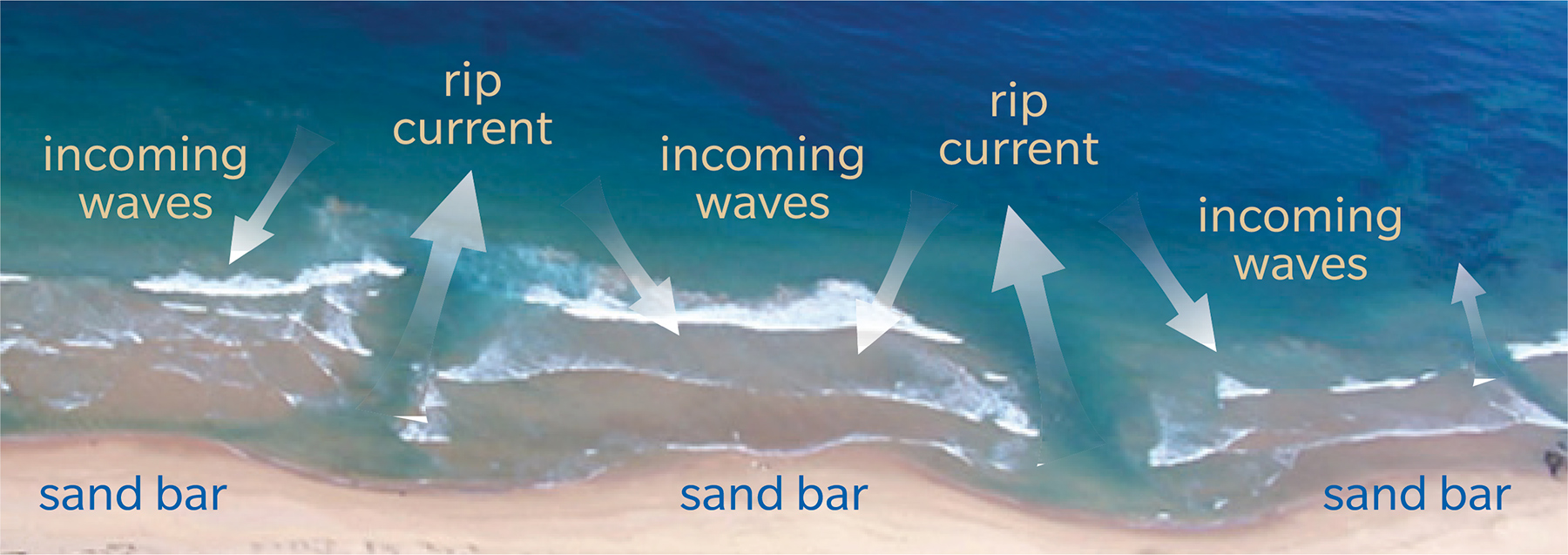In an emergency, call TRIPLE ZERO (000)
RIP CURRENTS
Rip currents are one of the greatest, and most common, hazards on Australian beaches. On average, rip currents are responsible for at least 21 drownings deaths in Australia each year. In addition, lifeguards perform countless rescues each and every year to assist swimmers who have been caught in rip currents.
There are many myths about the ocean, but rips are the number one hazard on Australian beaches. Avoid rips by swimming at a patrolled beach between the red and yellow flags.
We’re drawing the line on rips to make you stop and think before getting in the water.
STOP to check for rips. LOOK for other dangers. PLAN how to stay safe.
How to spot a rip current
The key signs to look for are:
- Deeper and/or darker water
- Fewer breaking waves
- Sandy coloured water extending beyond the surf zone
- Debris or seaweed
- Significant water movement
Sometimes it can be easier to look for where the waves are breaking consistently, and then look to each side where they don’t break consistently. Those areas are rip currents.
Can you spot a rip?
Rips can change shape and location quickly and may be difficult to see. Watch this video to learn how to identify a rip and what to look for.
How to survive a rip current
If you’re caught in a rip current, conserve your energy and consider these options:
- Stay calm
- Seek help. Raise your arm and call out. You may be rescued
- Float with the current. It may return you to a shallow sandbank
- Swim parallel to the beach or towards the breaking waves. You may escape the rip current
The Facts about Rip Currents
There are many myths about the ocean, but rips are the number one hazard on Australian beaches. Avoid rips by swimming at a patrolled beach between the red and yellow flags.
